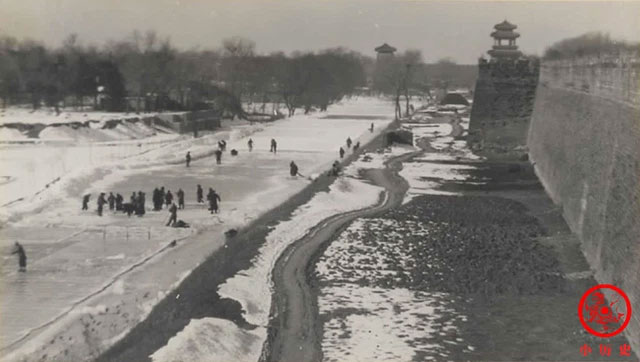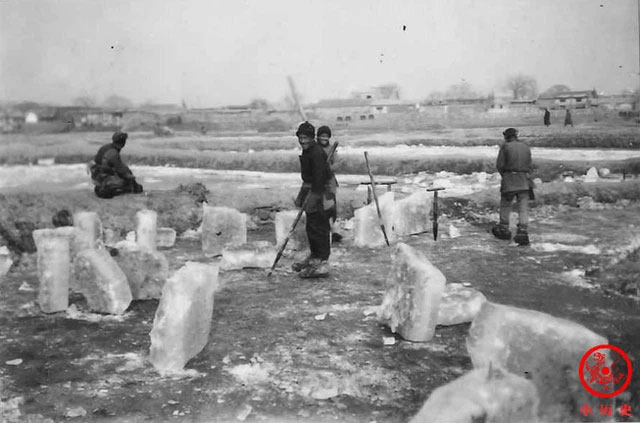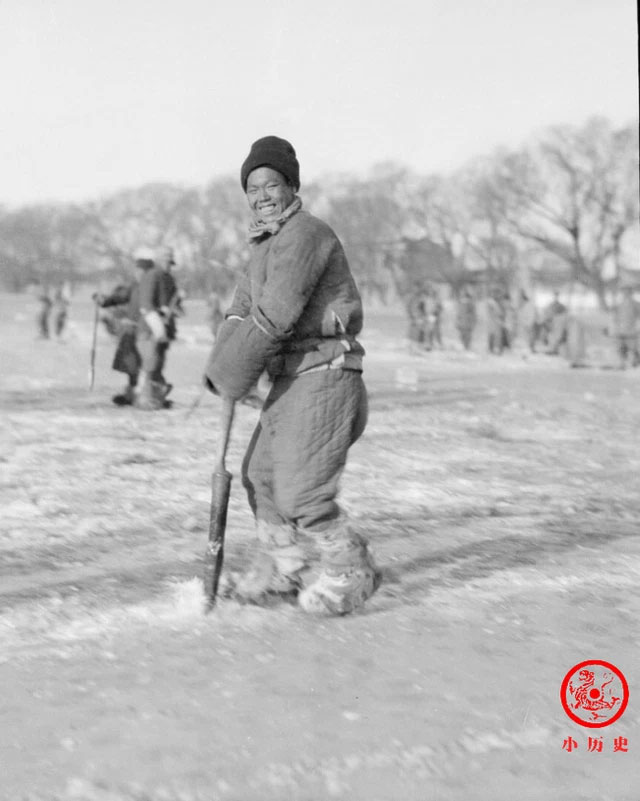Close-up of the process of harvesting winter ice to make 'air conditioners' for the Emperor at the end of the Qing Dynasty
Old photographs from the late Qing Dynasty depict the busy ice harvest season in Beijing.
After the winter solstice, northern China gradually entered the coldest season of the year. At this time, a group of people began to get busy with the work of harvesting ice.

Exploiting ice on the household river.
In the age when there were no refrigerators, people used ice to cool off, but this privilege belonged only to the Emperor and the noble princes in the palace.
At that time, they will harvest the ice in the winter and store it cold for use in the summer. This job has been formed since the Shang Zhou period and by the time the refrigerator was born, it completely disappeared.

Ice block cutting process.
During the Qing Dynasty, Beijing's ice harvesting was monopolized by the Ministry of Internal Affairs and the Ministry of Public Security. Accordingly, the common people are not allowed to access the area specializing in ice mining of the Royal Family.
In the winter, these two departments will be responsible for taking the ice and transporting it into storage. In the summer, they continued to carry out the supply process for the Royal Palace, the Royal Palace and the martial arts officials. If ordinary people want to use ice, they must meet two conditions: status and wealth.

Use a sharp awl to punch the tape.
The power of the imperial court at the end of the Qing Dynasty was in decline. Ordinary people also took the opportunity to participate in the ice harvesting business to make a profit.
After the Qing Dynasty was completely destroyed, Yuan Shikai's government announced places where people could exploit ice. At the same time, people will apply for a business license, pay the river surface rent and water fee to the Beijing Public Affairs Bureau.
Since then, a series of "company" exploiting and trading ice was born. People were able to dispel the heat of summer with ice cold.

Workers pull ice from the river to the shore.
The ice mining sites of Beijing in the old period were located in Beihai, Hocheng River, Shishahai (including 3 lakes in the north of Beijing: Tien Hai, Hau Hai, Tay Hai),.
After the annual winter setting, people begin the process of cleaning rivers and lakes, including removing impurities (grasses, algae, etc.), draining dirty water out of the mining area, and building temporary dams. to store water. Until the cold winter peaks, the water surface freezes with a certain thickness, the workers can proceed to harvest.

Workers pull the block of ice into a temporary storage pit.
Of course, if the ice mined from the lake does not meet sanitary standards for direct use, it is only used to cool food, fruit and drinks for the summer.
Ice to be used directly must be obtained in a clean and specifically zoned area.

The tape is neatly stacked in the storage pit.
According to National Magazine, the process of ice extraction and storage is divided into 13 stages corresponding to 13 groups of full-time workers.

The ice storage is tightly sealed.
Such fragmentation of the mining process will prevent the ice from melting significantly until it is brought to the storage area. At the same time, the process must ensure that the influence of wind and sunlight is minimized as much as possible.

Ice is shipped out of storage during the summer.
The first job of the mining process is to draw a profile on the ice and then proceed to cut the block.
The size of the standard ice block is 2.4 meters long (nearly 80cm), 1.8 meters wide (nearly 60cm), 1.2 meters thick (nearly 40cm). Each block of ice weighs about 100kg, not too big or too small, nor broken. The broken ice blocks that do not meet the standards will be considered discarded goods, not transported to the warehouse.

Ice is used to chill fruit.
Ice mining time each year lasts more than 1 month. During this period, workers almost had to work through the night, extremely hard.
Working on ice in the excruciating cold is a torment to human endurance. Furthermore, transporting large blocks of ice requires a lot of physical exertion. That's why workers' arms are often painfully swollen.

A stall selling cold drinks in the summer.
Restaurant and large-scale raw meat store owners must order and pay one year in advance. Accordingly, they will not be affected if the ice price in the following year is increased.
The ice "companies" also keep a certain amount of ice to supply to small shops for marinating fruits, making plum wine, snow flower tea and other cooling drinks in the summer.
- Why did the Qing emperor all die in winter?
- The last frequency of the pilot was buried in Chinese history
- Discovered a 300-year-old mysterious mummy in China
- Rare photos of how to organize the wedding of a noble Chinese family in Qing Dynasty
- The inexplicable mystery inside the Qianlong tomb
- Authentic image of Qing soldiers
- The thousand-dollar artifacts of the Qing emperor were turned into table lamps
- Strange story 'cohabitation' in the Royal Qing Dynasty
- Why did the Qing monks always wear a white silk scarf on their necks?
- 4 periods of heavenly action in the Forbidden City
- The singer carefully went up to the Queen's throne because of being harmed, death was only buried in the roadside
- The 3 most powerful dynasties in Chinese history
 The 11 most unique public toilets in the world
The 11 most unique public toilets in the world Explore the ghost town in Namibia
Explore the ghost town in Namibia Rare historical moments are 'colored', giving us a clearer view of the past
Rare historical moments are 'colored', giving us a clearer view of the past The world famous ghost ship
The world famous ghost ship